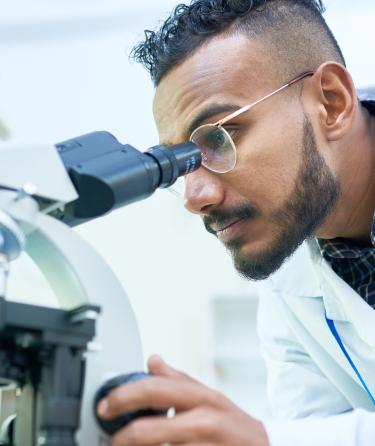Microbiology
Degree Offered
Associate in Arts Degree in Biology - Health Science Option (21 units, Plan A)
The Health Science option of the Associate in Arts Degree in Biology provides an orientation to the health sciences while including the general background required for the fields of nursing, dental hygiene, respiratory therapy, physical therapy, and other health fields.
Students who wish to obtain an Associate degree in Biology (Health Science Option) may do so by completing the course requirements listed below plus all other WLAC requirements for an Associate degree.
Required Courses
- ANATOMY 1 Introduction to Human Anatomy (4 units)
- BIOLOGY 3 Introduction to Biology -Bio 3A & Bio 3B (4 units)
- CHEM 51 Fundamentals of Chemistry I (5 Units) OR
- CHEM 60 Introduction to General Chemistry (5 units)
- MICRO 20 General Microbiology (4 units)
- PHYSIOL 1 Introduction to Human Physiology (4 units)
Recommended Courses
- CHEM 101 General Chemistry I (5 units)
- PSYCH 1 General Psychology I (3 units)
- SOC 1 Introduction to Sociology (3 units) OR
- SOC 2 American Social Problems (3 units) OR
- ANTHRO 102 Human Ways of Life: Cultural Anthropology (3 units)
NOTE: Always review requirements of the institution to which you plan to transfer.
Class Description
General Microbiology - Micro 20 (4 Units)
This course is a comprehensive study of microorganisms, including their structure, metabolism, methods of multiplying, and classification. The techniques used to control microorganisms and the human body's defenses against microbial attack are emphasized. The laboratory covers the microscopic examination of microorganisms, aseptic techniques, the cultivation of bacteria, the effects of anti-microbial agents, and the influence of the environment on bacterial growth.s
Textbook: Tortora, Funke, Case. Microbiology: an Introduction, 12th ed., Benjamin Cummings Publishing Co.
Lab Manual: Leboffe, Pierce. Microbiology Laboratory Theory & Application, Brief 3rd ed., Morton Publishing Company. Customized for WLAC
Prerequisites: Biology 3A, 3B.
Recommended: Successful completion of English 28.
Transfer: UC/CSU
Student Learning Outcomes:
At the end of the semester, the student will be able to:
- Understand the physiology, molecular composition, identification of microorganisms, and the structure and replication of infectious particles
- Understand and discuss the characteristics of infectious diseases, and the molecular and cellular principles of the human immune response to them.
